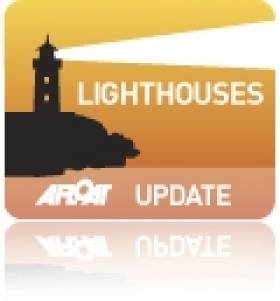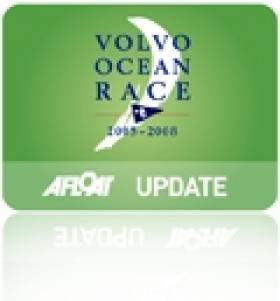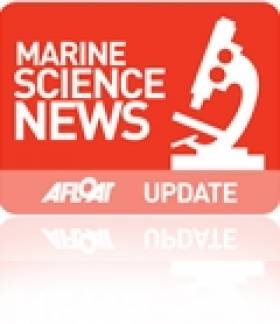Displaying items by tag: Yvonne Shields
New Lighthouse Helicopter Contract Awarded For UK & Ireland
#cil –The General Lighthouse Authorities (GLAs) of the UK and Ireland have announced a £13M seven-year contract to PDG Helicopters for the provision of helicopter services to cover all three Authorities according to the PDG website here.
The provision of one helicopter supplier across the GLAs will deliver significant cost savings of around £7.9M to the General Lighthouse Fund, which pays for the safety critical work of the GLAs to provide a reliable, efficient and cost-effective Maritime Aids to Navigation service around the coast of UK and Ireland.
Until now each Authority has contracted its own helicopter service provider and co-ordinated its own activities. The decision to award a single tri-GLA contract for helicopter services is a first for the participating Authorities, who established a cross-GLA project team to manage the procurement process.
Helicopters have been contracted by the GLAs since the 1970's for the transportation of personnel to remote and difficult-to-access sites and for specialised operations to transport materials to and from their support vessels and lighthouses.
PDG Helicopters is one of the UK and Ireland's leading helicopter providers. PDG operates an extensive fleet of modern aircraft and will deploy two Eurocopter EC 135 aircraft to fulfill the contract requirements. Headquartered in Scotland PDG has operating bases across the United Kingdom and Ireland from which it flies over 11,000 hours a year supporting a wide range of onshore and offshore markets. The new seven year contract, with an extension option for up to a further three years, will commence in December 2015 allowing existing contracts to complete and for a period of training and familiarisation.
The projected flying hours across the GLAs will be around 1,000 per annum - the number of flying hours has reduced over recent years - in part achieved through the improved engineering of remote lights giving greater reliability and reduced maintenance burden created by the ongoing work to introduce solar power and LED lights but also through more effective and collaborative planning across the GLAs.
Deployment of the helicopter will be co-ordinated by the three lighthouse authorities, working in collaboration. The GLAs will consult on PDG Helicopters work plans and align the helicopter services in the most efficient and effective manner to meet their operational requirements. However, by the very nature of the safety critical work of the GLAs, an agreed contingency procedure will be put in place to allow the Authorities to deal with any immediate or short-notice high priority tasking.
Captain Ian McNaught, Deputy Master of Trinity House said "This single contract demonstrates the GLAs willingness to adapt and change working practices collaboratively in order to develop best practice and reduce operating costs. It makes a positive contribution to the achievement of real cost reduction whilst continuing to deliver the essential network of aids to navigation the GLAs provide to the maritime community in the UK and Ireland. A potential saving of £7.9M is something the GLAs are extremely pleased to report to its stakeholders."
Mike Bullock, Chief Executive of the Northern Lighthouse Board said "Helicopters provide an essential capability for the GLAs as they allow both personnel and material to be delivered to difficult to access sites in remote and often hostile environments. With safety considerations at the forefront of the procurement process, we have looked very closely at the type and capability of helicopter to ensure we provide a reliable and safe means of access to and from our sites."
Yvonne Shields, Chief Executive of the Commissioners of Irish Lights said "We are pleased to be working with PDG Helicopters. Over recent years the EC 135 has already proved its capabilities by carrying out operations for two of the GLAs under separate contracts and PDG Helicopters, through its subsidiary Irish Helicopters, has successfully worked with the Commissioners of Irish Lights since the 1970's so we are aware of the service they provide and we look forward to continue working with them under the new contract."
At the contract signing Jerry Francis, Chief Executive of PDG Helicopters said "We are delighted to be awarded the GLA Helicopter Service Contract and are proud to be supporting them in the delivery of their statutory duty for the safety of the mariner. In working closely with clients to deliver a truly bespoke helicopter service and by responding quickly to our clients needs we continue to build on our reputation and commitment to safety. The award of this contract is a natural progression from working exclusively with the Commissioners of Irish Lights and we look forward to extending this vital service across the entire United Kingdom and Ireland."
Shields Leads New Era for Commissioners of Irish Lights
#LIGHTHOUSES - Making strides in renewable energy and working in harmony with the country's marine resources are top of the agenda for the Commissioners of Irish Lights (CIL) under new chief executive Yvonne Shields.
Though its main focus will remain safety at sea through its maintenance of Ireland's coastal network of lighthouses, buoys and shipping aids, Shields tells Lorna Siggins in today's Irish Times that the agency must transform in order to pay its own way - by branching out into data and information provision for fish farms and offshore wind farms, among other services.
The 'Twitter buoy' installed in Galway for the Volvo Ocean Race finale, as previously reported on Afloat.ie, is one response to the changing face of navigation, "using next generation technologies to communicate with sea goers and navigators around our coasts".
Shields' background in the Marine Institute matches her own personal interest in the economic potential of Ireland's marine sector.
“We have 10 times our land mass out there, but it only fuels 1 per cent of gross domestic product (GDP),” she says. “There’s no reason this couldn’t increase to 5 per cent and further."
Another aspect of the agency's work is co-operation with local stakeholders around the coast, such as with the RPSB on a puffin sanctuary on Rathlin Island, and a new attitude towards exploiting Ireland's lighthouse assets as tourism destinations.
The Irish Times has much more on the story HERE.
New Twitter Buoy Starts Tweeting
#twitterbuoy – Up to the minute information on the progress of the 39,000 mile Volvo Ocean Race – headed for Galway in three weeks time – will be "tweeted" to millions around the world from a high tech "Twitter Buoy" which will "go live" in Galway Bay.
The Galway 'Twitter' Buoy was launched by the Irish Lights Vessel "Granuaile" as previously reported by Afloat.ie at a location close to Mutton Island and will transmit a constant flow of data on the race, the weather conditions being experienced by the sailors and other ocean and meteorological data.
The Galway 'Twitter' Buoy will be accessible on Twitter @Galwaybuoy. Its information stream will also be passed onwards through Facebook and the Internet. It will transmit from today until mid July.
The launch of the service – a Volvo Ocean Race first - has come about through a collaboration between the Commissioners of Irish Lights, the Marine Institute, Techworks Marine, Smartbay Ireland and IMERC partners, (Irish Maritime and Energy Resource Cluster).
The eight metres high navigational buoy is fitted with multiple environmental sensors and electronic transceivers including AIS (Automatic Identification system) and RACON (Radar beacon) and will 'tweet' the whereabouts of the Volvo boats as they head for the nail biting Race Finale in Galway. Photo:Andrew Downes
Irish Lights Appoint New Chief Executive
For the last 19 years Ms Shields has worked in the marine sector, most recently as Director of Strategic Planning and Development at the Marine Institute since 2004. In this role she had responsibility for oversight and management of the National Marine Research Programme, EU and International Policy and Programmes, Ocean Energy, Marine Technology and the Marine Data and Information Services Group of the Marine Institute.
Prior to this she held the position of Director of Science and Technology at the Marine Institute with responsibility for Research Vessel Operations, the National Seabed Survey, Oceanographic Services and the National Data Buoy Network. In addition she has worked in the marine tourism, aquaculture and private-forestry sectors.
- Ocean Energy
- Marine Institute
- Commissioners of Irish Lights
- Irish Lights
- Dun Laoghaire Harbour
- Yvonne Shields
- CIL
- Dun Laoghaire Harbour News
- National Marine Research Programme
- Marine Data and Information Services Group
- Director of Science and Technology at Marine Institute
- Marine Insitute Research Vessel Operations
Irish 'Underwater Atlas' Launched at Geoscience Event
Following the publication of 'The Real Map of Ireland', showing a three-dimensional overview of Ireland's seabed territory, earlier this year comes 'The Real Atlas' – a detailed compilation of stunning three-dimensional imagery featuring the submarine canyons, underwater mountains and abyssal plains that make up Ireland's seabed territory, an area ten times that of our land mass.
This publication, Atlas of the Deep Water Seabed, Ireland was unveiled today (Wednesday 3rdth November) by Minister of State at the Department of Communications, Energy and Natural Resources, Mr. Conor Lenihan, T.D. at the Geoscience 2010 conference in Dublin Castle. It has been compiled by University College, Cork from data gathered as part of the Irish National Seabed Survey (INSS) and INFOMAR inshore seabed survey undertaken by the Geological Survey of Ireland (GSI) the Marine Institute and partners,
Speaking at the opening of the event Minister Lenihan said, "This is the first such Atlas of its kind world-wide, reflecting our leading role in this field. It will be a valuable resource as we seek to utilise our vast ocean resources in the years ahead. As we develop ocean energy, offshore wind and further oil and gas prospecting, an accurate map of the deep seabed will be vital."
The first day of the conference focused on what has been described by European Commissioner for Research, Innovation and Science, Maire Geoghegan-Quinn as one of the "grand challenges for the 21st Century" – the seas and oceans. It featured detailed papers on seabed mapping, deepwater coral reefs, deepwater remotely operated vehicles and a virtual computer simulation of Galway Bay.
3D image of the 300 km-long Gollum Channel system off the Porcupine Seabight, extending from the edge of the Seabight right down to the Porcupine Abyssal Plain.Image by B. Dorschel with kind permission from Springer Science+Business Media B.V.
First day speakers from the Marine Institute included Fabio Sacchetti, who described the mapping of the Rockall Trough, and Tommy Furey who discussed the value of seabed mapping projects to a wide variety of marine industries. The first day's proceedings also included a paper by Dr Colm Lordan of the Marine Institute's Fisheries Science Services team on the value of the INFOMAR seabed survey to the Irish fishing industry, and an important paper by the Marine Institute's Director of Strategic Planning and Development Services, Yvonne Shields entitled "Irish Marine research in the Bigger Picture."
The second day of the conference, will focus on more terrestrial themes includes papers on new findings in relation to Irish offshore basins from researchers at UCD.
Full details of the event, including the programme of speakers, are available from:
http://www.gsi.ie/Geoscience+Initiatives/Geoscience+2010+Conference.htm
Atlas of the Deep Water Seabed, Ireland can be ordered directly from amazon.co.uk at:



























